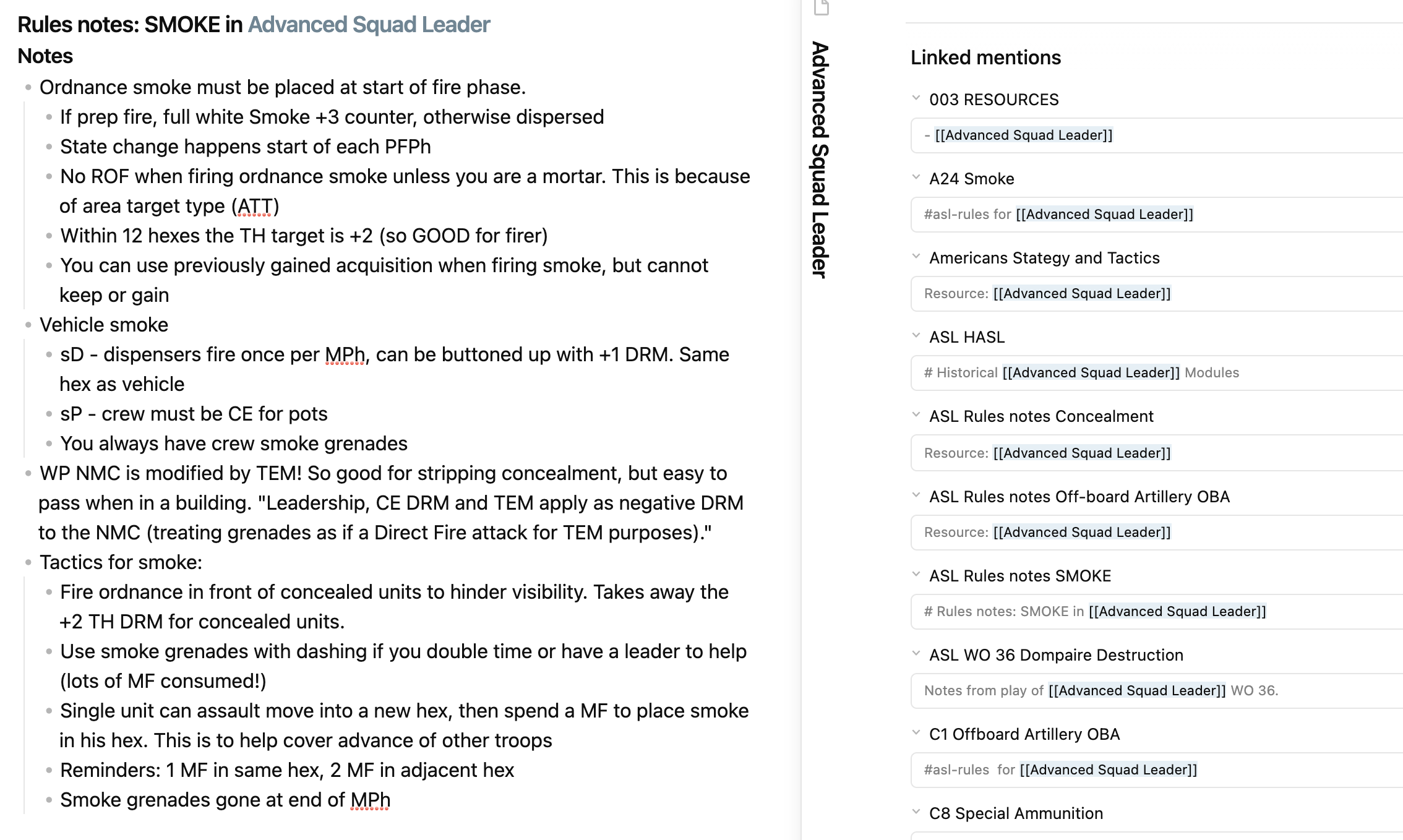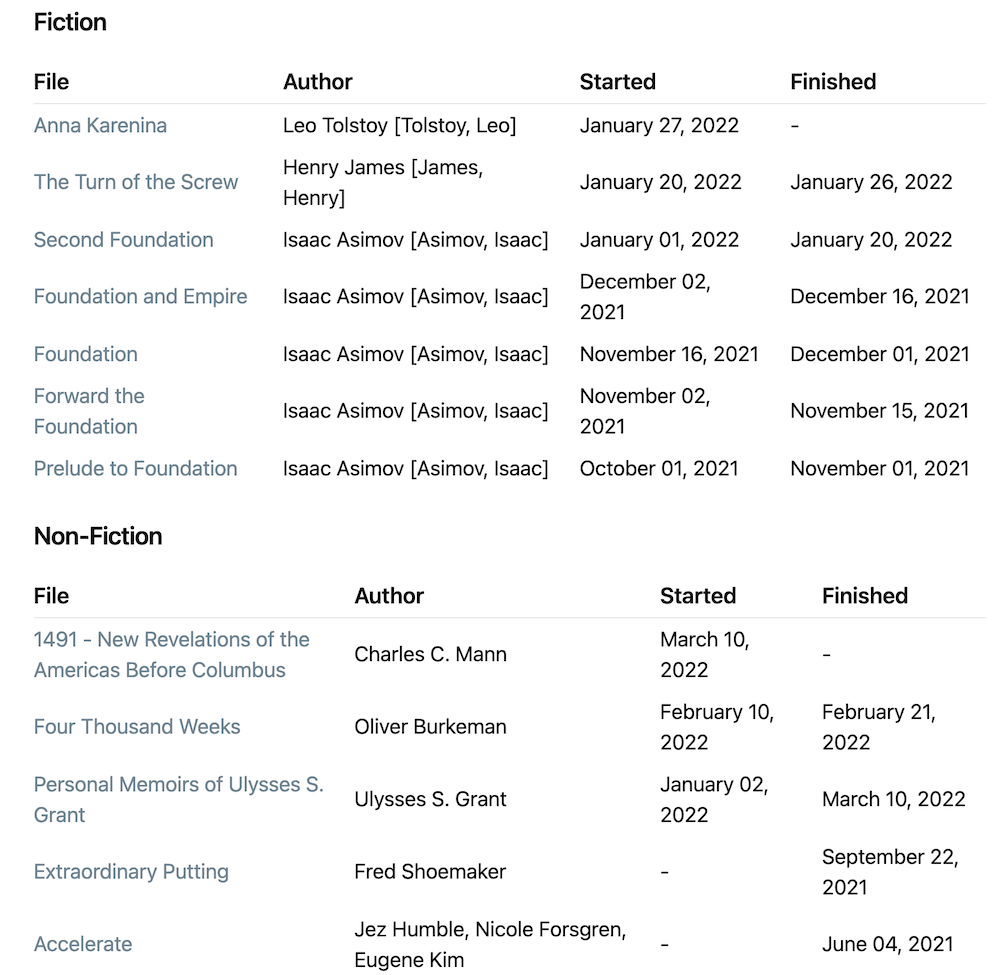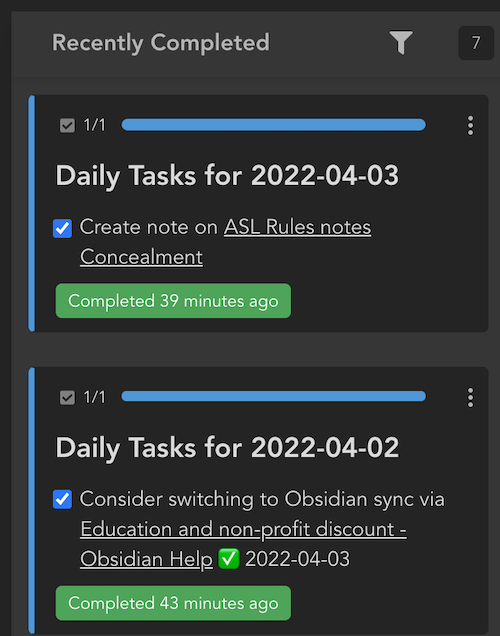Time for a Toolset Update
My last update on my productivity toolset was over two years ago. I’ve changed things up pretty dramatically since then, with the only stable component being the Drafts app.
I was all-in on Notion back in 2020 but two issues pushed me away:
- Lack of a solid offline option (always gotta be connected to their cloud service)
- Lack of an API to facilitate automation.
These weren’t surprises or new concerns for me back then. In fact I said:
I’m certainly placing a bet on Notion’s roadmap as the feature gaps I mention above will be showstoppers for me eventually. 2020 has started with some nice baby steps so I’m hopeful.
Sadly Notion was too slow in its development for me to stick with it. About a year ago I experimented with Obsidian as a “way out” of Notion and I haven’t looked back.
I am still roughly using the PARA method but I’m finding the quick switch, back-linking, and search abilities of Obsidian make this less useful. For example, I track rules interpretations and sources for the board game Advanced Squad Leader. These are Resources in PARA parlance, and ought to be either filed away in a Resources folder, or tagged in some way to identify them as such.
 Example ASL rules note
Example ASL rules note
Because Obsidian does such a nice job of indexing back links, the system becomes mostly self-organizing as long as I am diligent about creating these links. I’m learning to do this naturally, for example:
# [[Putting]] Games for [[Golf]]
I use a robust set of core and community plugins with Obsidian with the Dataview plugin being the most important. Check out my book reading summary:
 Book reading summary, generated by Dataview
Book reading summary, generated by Dataview
When I start reading a book, I create a new note with some summary metadata (automated through templates in Drafts):
---
Title: Anna Karenina
Title sort: Anna Karenina
Author: Leo Tolstoy [Tolstoy, Leo]
Publisher: Standard Ebooks
Tags: Fiction, Historical Fiction, Literary
Languages: eng
Timestamp: 2022-01-16T03:54:53+00:00
Published: 2020-05-21T23:28:02+00:00
Identifiers: url:https://standardebooks.org/ebooks/leo-tolstoy/anna-karenina/constance-garnett
Type: Fiction
Started: 2022-01-27
Finished:
---
See also: [[Anna Karenina Study Guide]]
The summary above is produced automatically as long as I (1) place these notes in a proper sub-folder (I could use tagging instead if I wanted) and (2) have the proper front-matter metadata included.
I do have to train myself almost kata-like to leverage the plugins and built-in capabilities of Obsidian. It helps that I know Markdown fluently, but syntax for block transclusion throws me off unless I practice it consistently.
Julie is even onboard with Obsidian, having divorced herself from Evernote after a 7+ year affair. I haven’t heard any complaints so I think it is going well! She had also maintained her permanent personal notes with Sublime Text and Markdown, so Obsidian wasn’t a big leap for her.
Oh, I should talk about task and project tracking. I use the Obsidian Tasks community plugin along with the brilliantly executed Imdone application. Imdone simply creates a Kanban board by looking at a directory (or set of directories) you point it at, sussing out tasks and project cards from plain text files. It natively works with Obsidian and was just the tool I needed to round out my productivity suite.
 Imdone example
Imdone example
What’s nice about the Obsidian Tasks + Imdone combination is that they are both unaware of each other and seamlessly integrated. I can live for a week with just my iPad without using Imdone and still track my tasks with the Obsidian iPad app. When I have more going on and need to be more aware of project organization and WIP, I can open Imdone on my laptop and have a better big picture view.
